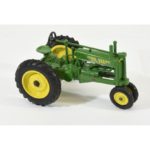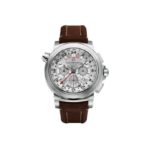Fans of coin collecting probably already know that one of the greatest aspects of numismatic auctions is the rich history that accompanies each lot that comes up for bidding. You could be bidding on a coin that was carried in the pocket of a resident of the original 13 colonies, a true piece of history itself. One thing that’s less frequently discussed, though, is the inventions that were designed to function strictly through uses of these tiny pieces of metal. Coin-operated machines are often thought of as a relatively recent invention, but that couldn’t be further from the truth. In fact, collectors of coin-operated devices may even be surprised with how long, detailed and rich a history these contraptions have.
Early beginnings
The earliest instances of coin-operated machines in history are, somewhat unsurprisingly, centered around commercial usage. As far back as 2,200 years ago, in fact, Egyptians were using these inventions to push high-demand products to consumers. According to the Coin Operated Collectors Association, the Ancient Egyptians were using a coin-operated machine as early as 215 B.C. Apparently, an Egyptian would insert a coin worth five drachma into a slot on a machine in order to receive a small amount of holy water. It is believed that the purchaser would then sprinkle the water on themselves as a sort of worship ritual. Moving forward, coin-operated vending machines had made their way to London as early as the 1700s. During this time period, it was not uncommon for English people to purchase pipe tobacco (practically a necessity at that point in time) from coin-operated machines on the street.
Transitions
The late 1800s represented an important shift in the role played by coin-operated machines, particularly in the Western world. Until this point, these machines had typically operated under the pretense that customers would use them to purchase small items while on the go. In the United States, for example, citizens would frequently purchase small staples such as gum, matches, stamps and cigars while out and about during the 1880s.
The turn of the century, though, would bring great change to the coin-operated industry. Around the 1890s, the first coin-operated forms of entertainment appeared, offering coin-bearing individuals the opportunity to gamble through simplified forms of dice games, roulette and poker. These machines would experience a meteoric rise in popularity throughout the ensuing decades, peaking in the years immediately prior to the United States’ involvement in World War II.
Moving forward
While the popularity of coin-operated forms of gambling was soaring, it was about to hit several snags in its progression. According to Collectors Weekly, many of these machines were outlawed during Prohibitionunderneath ordinances that made gambling illegal by associating it with drinking. While this caused a drop in the widespread use of the machines around the country, it also paved the way for one area to emerge as a coin-operated paradise.
In the early 1940s, gambling was legalized in several counties in Nevada, including those that hold both Reno and Las Vegas, two of the world’s largest gambling centers both then and now. These changes brought a massive influx of coin-operated machines into production, all aimed at capitalizing on the Southwestern state’s law changes. This reemergence of these machines into the mainstream American economy also prompted changes in the composition of the devices themselves. While the machines had historically been designed using different forms of metal and glass, simpler materials such as cast iron, oak, mahogany and plastics were now frequent choices in the design of coin-operated entertainment. In addition to being more durable, this allowed engineers to create simpler, more easily repaired layouts for these devices.

An archive of Coin-op collectibles sold at auction can be found here




